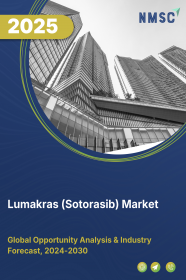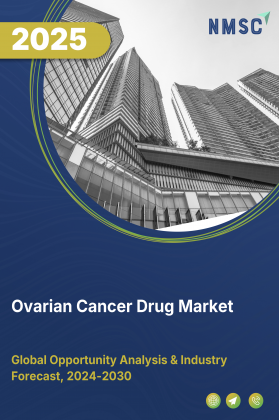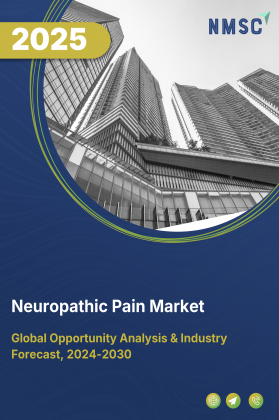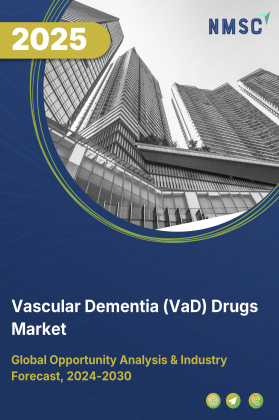
Lumakras (Sotorasib) Market by Dose (960 mg, 480 mg and 240 mg) and by Application (Hospitals, Drug Centres, Clinics, and Others): Global Opportunity Analysis and Industry Forecast, 2021–2030
Market Definition:
The Lumakras (Sotorasib) Market size was valued at USD XX million in 2020 and is predicted to reach USD XX million by 2030 with a CAGR of XX% from 2021-2030.
Lumakras is a prescription drug mainly used to treat adult patients with non-small cell lung cancer (NSCLC) that has spread to other parts of the body or cannot be removed by surgery. Also, these drugs are used to treat patients whose tumor has an abnormal KRAS G12C gene and have received at least one previous treatment for the cancer. This drug blocks the action of the abnormal protein that signals cancer cells to multiply, which in turn slows down the spread of cancer cells. Lumakras (Sotorasib) generally comes in a tablet form that is usually prescribed to be taken once daily before or after food.
It is the first treatment for non-small cell lung cancer (NSCLC) with a particular genetic mutation called KRAS G12C. It has been developed by Amgen and got approved by Food and Drug Administration (FDA) in May, 2021. The approval of Lumakras represents one of the major revolutions in the field of cancer treatment.
Market Dynamics and Trends:
Factors driving the lumakras (sotorasib) market growth are the ever-increasing cases of cancer and the high mortality due to it. This has created an unmet need for the development of new cancer treatment methods. Lumakras has also overcome the limitations of traditional cancer treatments. For instance, compared with conventional cancer treatments, Lumakras drugs have no side effects and also improve patient’s survival rates.
According to the data presented by Amgen, in June 2021, Lumakras showed that the median overall survival (OS) of 124 evaluable patients was 12.5 months, and the majority of them had previously received platinum-based chemotherapy and immunotherapy. The results confirmed that the objective response rate (ORR) was 37.1%, the duration of response (DoR) was 11.1 months, the disease control rate (DCR) was 80.6%. and the patient achieved complete remission (total response rate reached 42 partial responses) as compared to previously reported results.
However, there are various side effects that occur due to the use of Sotorasib such as diarrhea, vomiting, nausea and others, which in turn limits the market growth to some extent. On the other hand, the government and pharmaceutical companies are increasing the development of preferential reimbursement policies that would help to reduce the cost of cancer treatment, thereby decreasing economic toxicity for patients. In addition, researchers are also evaluating the role of Lumakras in other solid tumors, as well as its combined use with other immunotherapy drugs, which is expected to create lucrative opportunities for the market players in the coming years.
Market Segmentations and Scope of the Study:
The lumakras (sotorasib) market is segmented by dose, by application and by geography. Based on type the market is divided into 960 mg, 480 mg and 240 mg. Based on application, the market is segmented into hospitals, drug centres, clinics, and others. Based on geography, the market is divided into North America, Europe, Asia-Pacific, and RoW.
North America holds the lion share of lumakras (sotorasib) market during the forecast period. This is attributed to factors such as the increasing prevalence of non-small cell lung cancer and the existence of large pharmaceutical companies actively participating in marketing activities, especially in the United States.
However, Asia-Pacific is expected to show a steady rise in the lumakras (sotorasib) market. This is due to the increasing number of lung cancer cases in this region. Almost, 59% of the world’s lung cancer cases occurs in Asia and 21% of cancer deaths are due to lung cancer. Moreover, increasing demand for advanced treatment drugs and rising awareness among people about cancer and its treatment are the factors expected to propel the market growth in this region.
Competitive Landscape:
Currently, Sotarasib is solely manufactured by Amgen under the brand name of Lumakras. In June 2021, Amgen declared the combination study that results from the Phase 1b/2 CodeBreaK 101 study, the most comprehensive global clinical development program in patients with KRAS G12C-mutated advanced colorectal cancer (CRC). These data show that combining LUMAKRAS (sotorasib) with Vectibix (panitumumab), will provide monoclonal antibody epidermal growth factor receptor (EGFR) inhibitor, demonstrated encouraging efficacy and safety.
Also, recently in September 2021, Boehringer Ingelheim declared a clinical phase 1 collaboration with Amgen in order to evaluate the combination of BI 1701963, the most advanced SOS1: pan-KRAS inhibitor exhibiting activity against a broad spectrum of KRAS alleles, and LUMAKRAS™ (sotorasib).
Key Benefits:
-
The report offers quantitative analysis of the current lumakras (sotorasib) market and estimations through 2020-2030, that assists in identifying the prevailing market opportunities to capitalize on.
-
The study comprises a deep dive analysis of the lumakras (sotorasib) market trend including the current and future trends for depicting prevalent investment pockets in the industry.
-
The report contains information related to key drivers, restraints and opportunities and their impact on the lumakras (sotorasib) market.
-
The report includes key market players, market share, which helps understand their competitive analysis.
-
The competitive analysis of the market players along with their market share in the space robotics market.
-
The SWOT analysis and Porter's Five Forces model is elaborated in the study.
-
Value chain analysis in the market study provides a clear picture of the stakeholder’s role.
Key Market Segments:
By Type
-
960 mg
-
480 mg
-
240 mg
By Application
-
Hospitals
-
Drug Centres
-
Clinics
-
Others
By Geography
-
North America
-
U.S.
-
Canada
-
Mexico
-
-
Europe
-
Germany
-
France
-
UK
-
Italy
-
Spain
-
Rest of Europe
-
-
Asia-Pacific
-
China
-
Japan
-
India
-
South Korea
-
Australia
-
Rest of Asia-Pacific
-
-
RoW
-
Brazil
-
Saudi Arabia
-
South Africa
-
Rest of World
-
Key Players
-
Amgen Inc.
-
Bristol-Myers Squibb Company
-
Novartis AG
-
F. Hoffmann-La Roche Ltd
-
Boehringer Ingelheim International GmbH
-
Revolution Medicines, Inc.
-
Erasca
-
Cardiff Oncology, Inc.
-
Verastem
-
Immuneering Corporation
-
JACOBIO PHARMACEUTICALS GROUP CO., LTD.
-
Incyte
-
Sanofi
-
Quanta Therapeutics, Inc.
-
Frontier Medicines
REPORT SCOPE AND SEGMENTATION:
|
Parameters |
Details |
|
Analysis Period |
2019–2030 |
|
Base Year Considered |
2020 |
|
Forecast Period |
2021–2030 |
|
Market Size Estimation |
Million (USD) |
|
Market Segmentation |
By Dose (960 mg, 480 mg and 240 mg) and by Application (Hospitals, Drug Centres, Clinics, and Others) |
|
Geographical Segmentation |
North America (U.S., Canada, Mexico) Europe (Germany, France, UK, Italy, Spain, Rest of Europe), Asia-Pacific (China, Japan, India, South Korea, Australia, Rest of Asia-Pacific), Rest of the World (Brazil, Saudi Arabia, South Africa, Rest of World) |

















 Speak to Our Analyst
Speak to Our Analyst

























